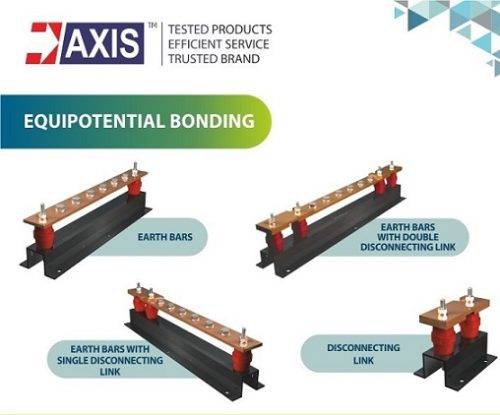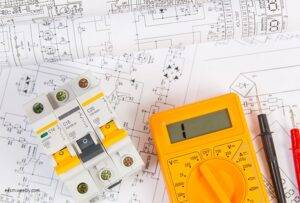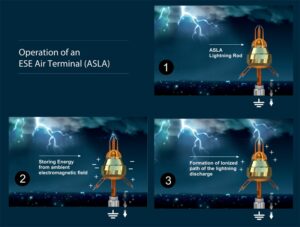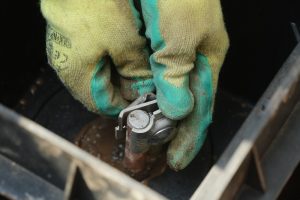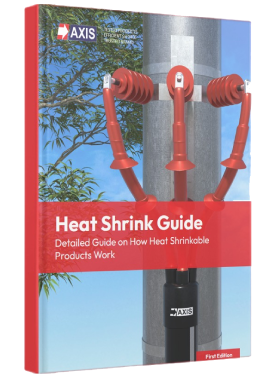Introduction
Earthed materials connect to the conductive surface of the Earth. They are connected for the safety purpose of routing defective current into the ground (by blowing a fuse) or dissipating potentially hazardous discharges.
When numerous earthed items are connected, the magnitude of their voltage is limited, and a harmful potential difference gets avoided. That eliminates the possibility of a worker being shocked by a dangerous electric charge, which travels from one earthed object through the worker onto another earthed item of a different voltage.
When two separate things have different potential energies, it might be dangerous for a worker to contact both at the same time, this usually happens when a circuit between two places of differing potential energy/voltage is established. The energy will flow as quickly as possible from the higher potential point to the lower potential one. This energy flow causes a current to flow through the worker, which can be fatal. The equipotential bonding of earthed equipment protects workers in equipotential zones by ensuring that the electrical potential between all the places of the body is virtually the same.
Equipotential bonding or simply bonding is a technique for minimising the danger of equipment damage and personal injury. It entails connecting all metals and conductive goods to an earthing system (also known as a grounding system) so all of them have the same potential energy (voltage).
Why Equipotential Bonding?
Equipotential bonding is essentially an electrical connection that keeps the potential of several exposed and extraneous conducting elements close to the same. An earthed equipotential zone is where exposed conductive parts and extraneous conducting parts are at nearly the same potential by bonding. The reason behind that is to ensure that the potential difference between accessible exposed conductive parts does not occur under fault situations.
Bonding is the process of connecting any available metalwork to the system earth, whether it is part of the system (known as exposed metalwork) or not(known as extraneous metalwork).
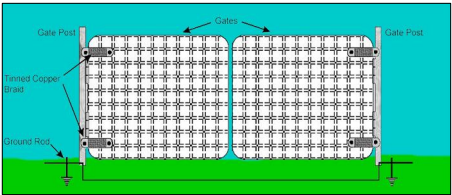
Source - Lightning & Surge Technologies
Equipotential bonding connects incoming water and gas supplies to the switchboard (also known as the fuse box, breaker box, or distribution board). It’s done in bathrooms, where all exposed metal (including metal pipes and electrical circuit earth) must be linked together to ensure they are always at the same potential.
Equipotential Bonding VS Earthing
In its most basic form, earthing and equipotential bonding prevent electric shock. As an example, consider a kitchen. The dishwasher develops an electrical problem, a current is removed and sent down to the earthing path of the electrical equipment. Without an earth connection, the dishwasher’s metal exterior casing might become live. The goal of the earthing is to reduce the contact voltage for that particular instance.

Equipotential bonding is a protective conductor to connect all at-risk metallic (conductive) pieces. In case you touched a malfunctioning dishwasher and then an un-bonded metal tap connected to un-bonded metal pipes in your kitchen, you may become an alternative earth path and receive a potentially fatal electric shock.
The lack of bonding (as well as earthing) would result in a chain reaction in which all metallic items in the kitchen become live. It’s a frightening scenario making earthing and bonding so critical, and knowing the difference between the two is crucial. The goal of bonding is to limit the magnitude of contact voltages.
EPB is simply a low-resistive path to the ground that connects all metal/conductive pieces together. In an earthing, all electrical products connect to an earthing network. In EPB, even non-electrical metallic equipment such as building columns, reinforcing, roofs, pipes, enclosures, gates connect to the earthing system.
EPB is a component of the earthing, lightning, and surge protection systems. It reduces the level of touch and step potential from an electrical standpoint.
Applications of Equipotential Bonding
a) Grounding systems, test joints, disconnection, and potential compensation can be placed in a register box or affixed to the wall directly.
b) A potential difference can occur due to faulty equipment such as a geezer or water cooler, which increases the level of passing current via pipes/faucet. The difference can be neutralised by connecting the pipe network to the earthing system, allowing earth leakage devices to operate.
c) Static charges can form in fluid-carrying pipes, mechanical equipment, and other industrial equipment, and static charges in the workplace, particularly in hazardous areas, can be extremely dangerous. One can ground them with suitable bonding.
d) Assume that in one industrial shed, the bonding of metal building components (roof and cladding sheet) does not connect to other building components such as pipe racks, pipes, and so on. In the event of a lightning strike on a metal roof, the potential difference between the metal shed and other components within the building close to the building envelope will be enormous. Sparking between building sheets and other equipment might happen in such a situation.
GET A QUOTE NOW
Industry Standards & Certification
Individuals working with power generating, transmission, and distribution equipment must employ equipotential bonding zones, according to OSHA standard 1910.269. The IEEE Guide for Protective Grounding of Power Lines, published by the Institute of Electrical and Electronics Engineers is one example of a method authorised by OSHA (IEEE Standard 1048).
According to IEEE Standard 524a, an equipotential work zone is one in which all equipment is coupled by jumpers or grounding devices, resulting in an acceptable potential difference between all areas of the zone.
Features of EPB
• Copper bar and connecting terminals in the Cu/Zn alloy.
• Connecting 2 to 5 round conductor models.
• Valid for circular conductors with a section of 50 to 120 mm2.
• For wall mounting, the bridge is supplied with insulated connectors.
• Installation is simple.
• A secure connection is established.
Facts and Requirements of EPB
• The purpose is to prevent indirect contact with exposed conductive parts and extraneous conductive elements that have become live due to an electric failure.
• The signalling power supply system is linked to earthed equipotential bonding within apparatus housings.
• External electrical systems are associated with the bonding of extraneous conductive elements that are not within equipment housings.
• All location cases within a distance of 2.0m from each other, one among them is earthed, must be bonded together as a direct requirement. This can avoid the possibility of a potential difference between two metal works creating a current flow, in case anybody mistakenly comes into contact with both (at the same time).
• A single main earth terminal or a busbar should be provided at each point, to which the equipotential bonding should be linked.
• Conductors for earthing and equipotential bonding should be shown on circuit diagrams and designed such that they may be evaluated for effectiveness (like by provision of disconnection links).
• To protect against traction faults in AC electrified locations, equipotential bonding to the traction return system should be used. As a result, all line-side metal works should link to the traction return system rather than the ground.
• Metalworks should avoid joining the traction return system in DC powered locations, nor should the traction return be bonded to any earth system. This could give an alternate return channel and, the stray currents may potentially cause damage to structures.
Advantages of EPB
a) We get exceptional ductility by annealing lugs and connectors.
b) Ease of entry for conductors, smooth edges.
c) It is economical, safe and high graded in use.
d) Featuring safe and economical construction, all copper components are electro-tinned to BS standard to prevent corrosion and oxidation.
e) There are shock-proof areas for entering the wire barrel, or the entrance is bell-mouthed for quick insertion of the conductors.
Manufacturing Standards
- The equipotential standard shall be tested and marked according to the following standards and their last known amendments:
- IEC/EN 62305-3 for lightning equipotential bonding and IEC 60364-4-41/60364-5- 54 (DIN VDE 0100-410/540)
- DIN VDE 0618-1 for testing practice
- DIN VDE 0609 for testing practice
- AS/NZS 3000:2007 and AS/NZS 3000:2018 for earthing conductors and earthing arrangement practice
- NEC 250.8: Equipotential bonding for the grid
- IEC 62305
- NFC 17-102:2011
- UNE 21186:2011
- REBT- IEC 62561/1
- DIN VDE 0618-1:1989-08
- BS 7671:2018; Electrical Installations Requirements
- Main equipotential bonding according to DIN VDE 0100 and lightning protection equipotential bonding according to DIN EN 62305 equipotential bonding strip
- Code of practice for protective earthing of installations, BS 7430:2011+A1:2015
- BS IEC 60479-1:2018 IET Guidance Note 8 Earthing and Bonding Current’s effects on humans and livestock.
Required Certifications for Equipotential Bonding
- Underwriter Laboratories Inc. (UL): Grounding and Bonding Equipment
- Power grid corporation India limited
- NFC standards
- NTPC: National thermal power corporation
- NSIC CRISIL: SE 1A
- AEO: Indian Customs
- Star Export House Government of India
Thank you for reading the blog, Axis is a leading manufacturer and supplier of Electrical Components to over 80+ Countries. Talk to our industry expert by visiting our contact us section. You can also watch our videos by our experts – click here.

